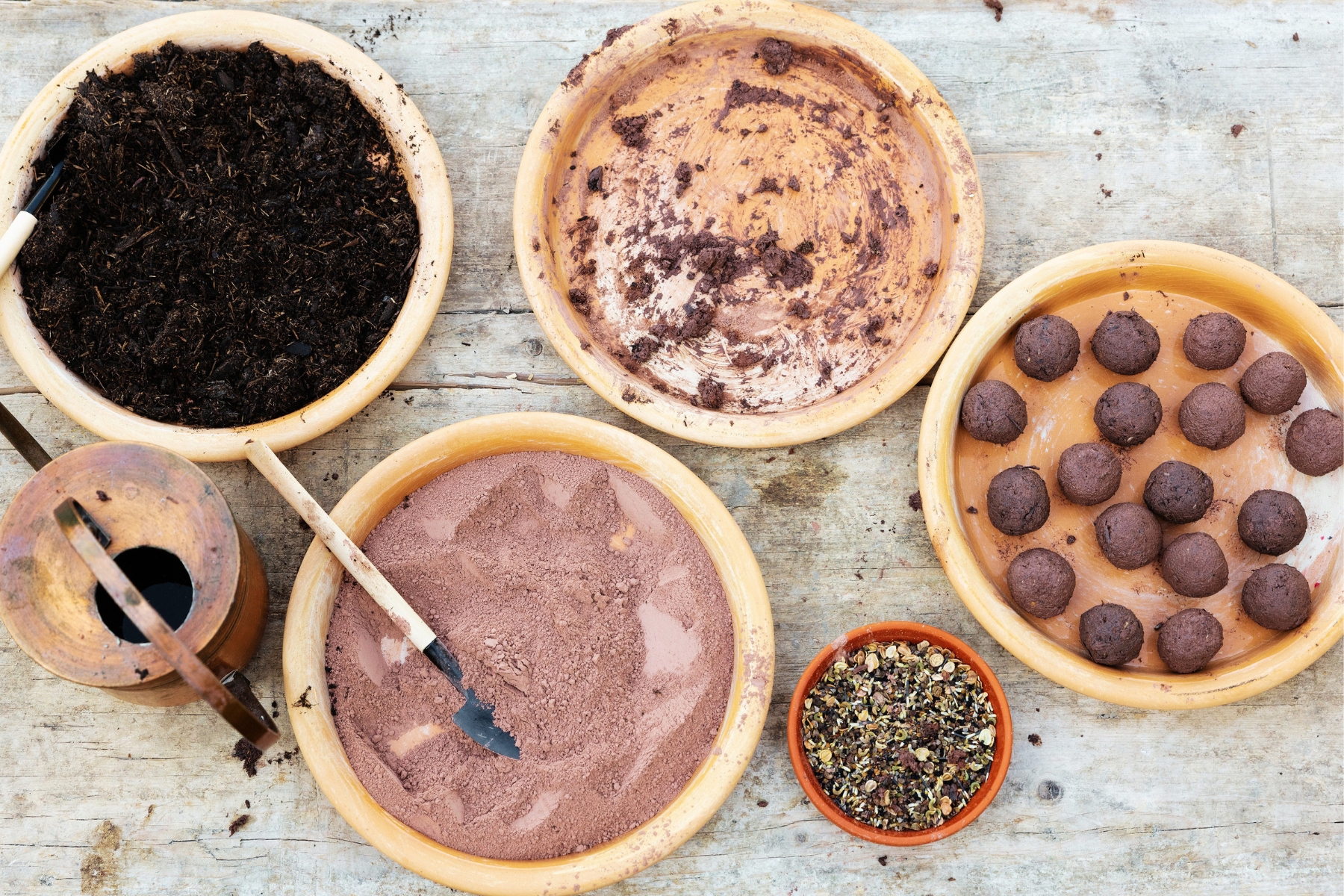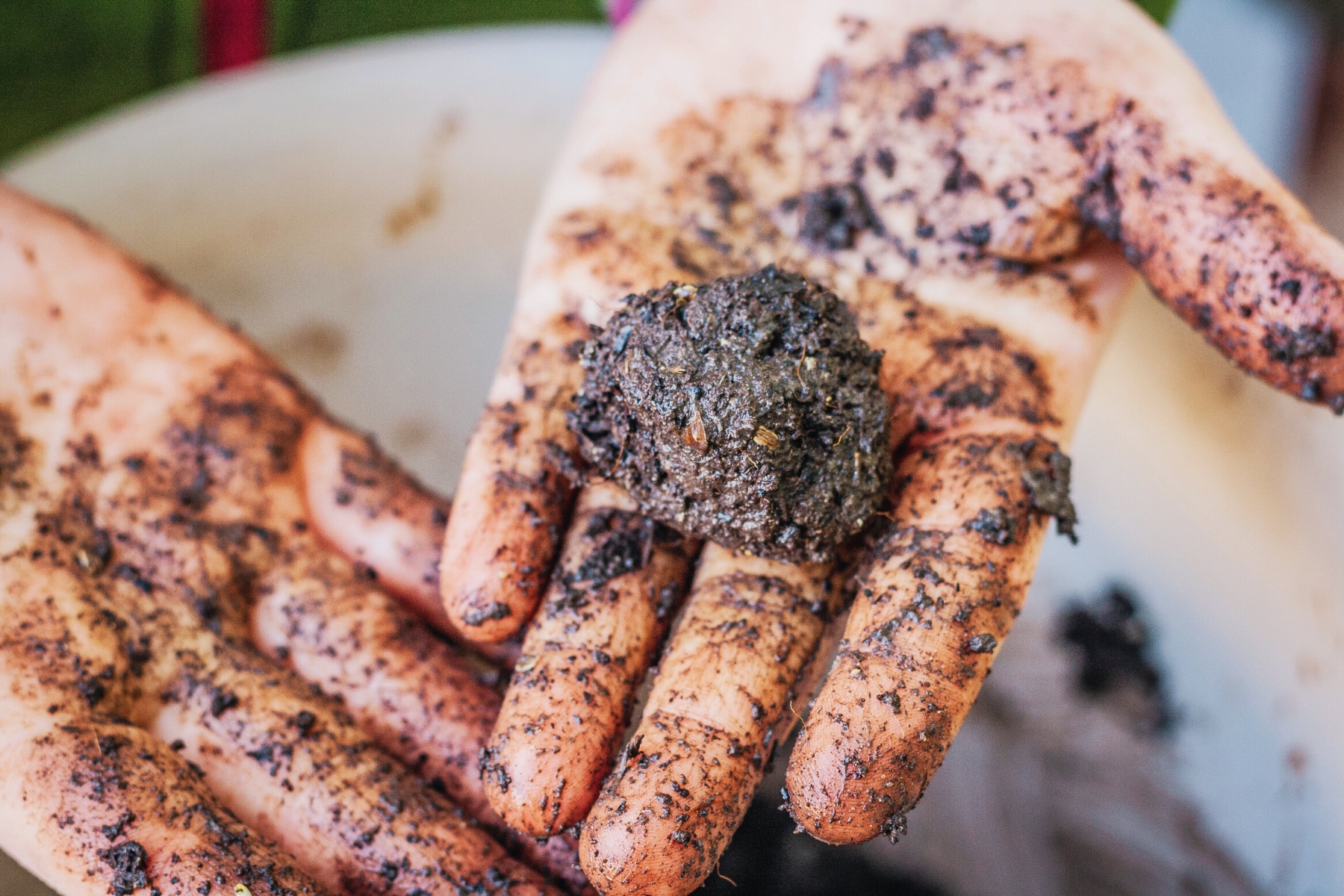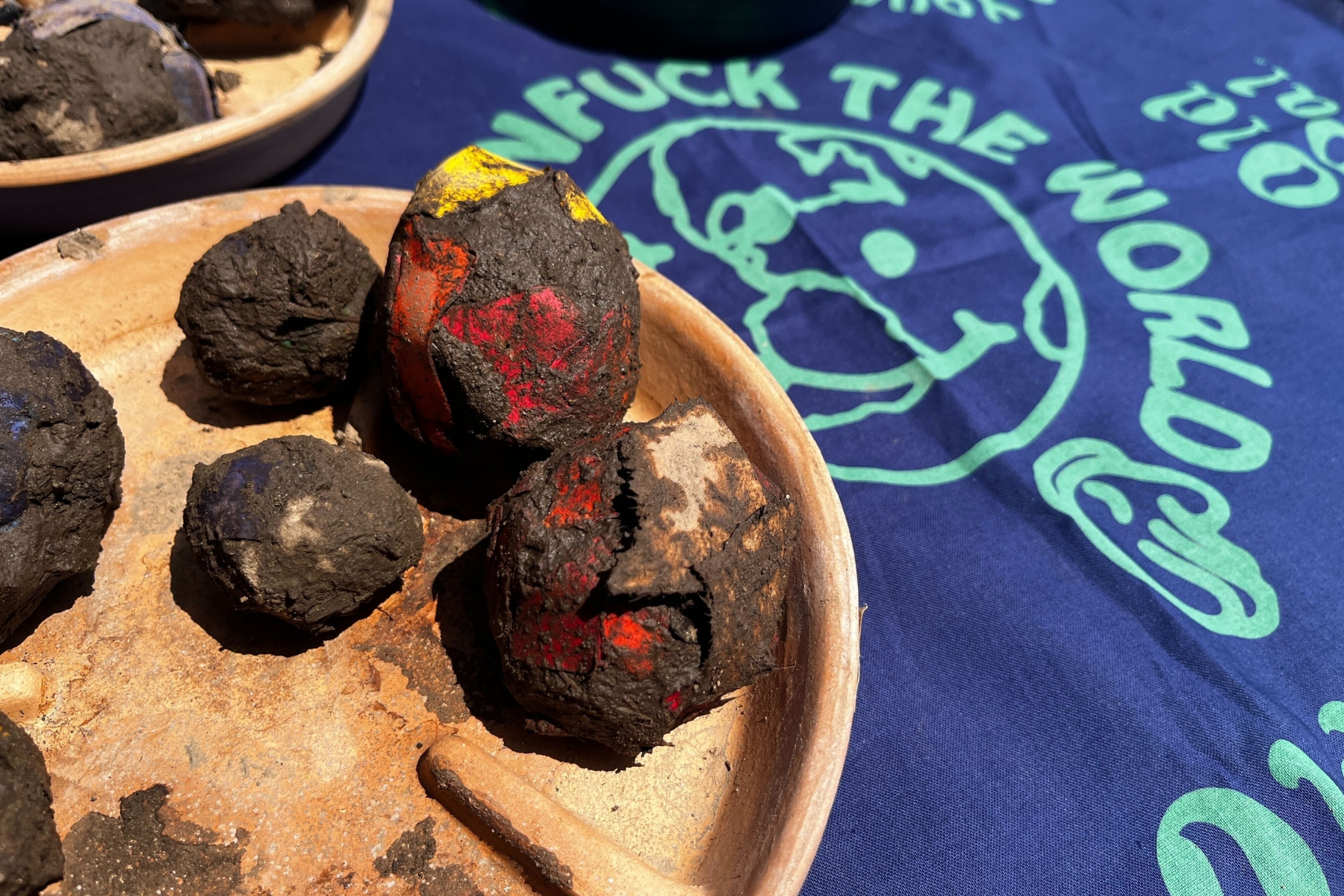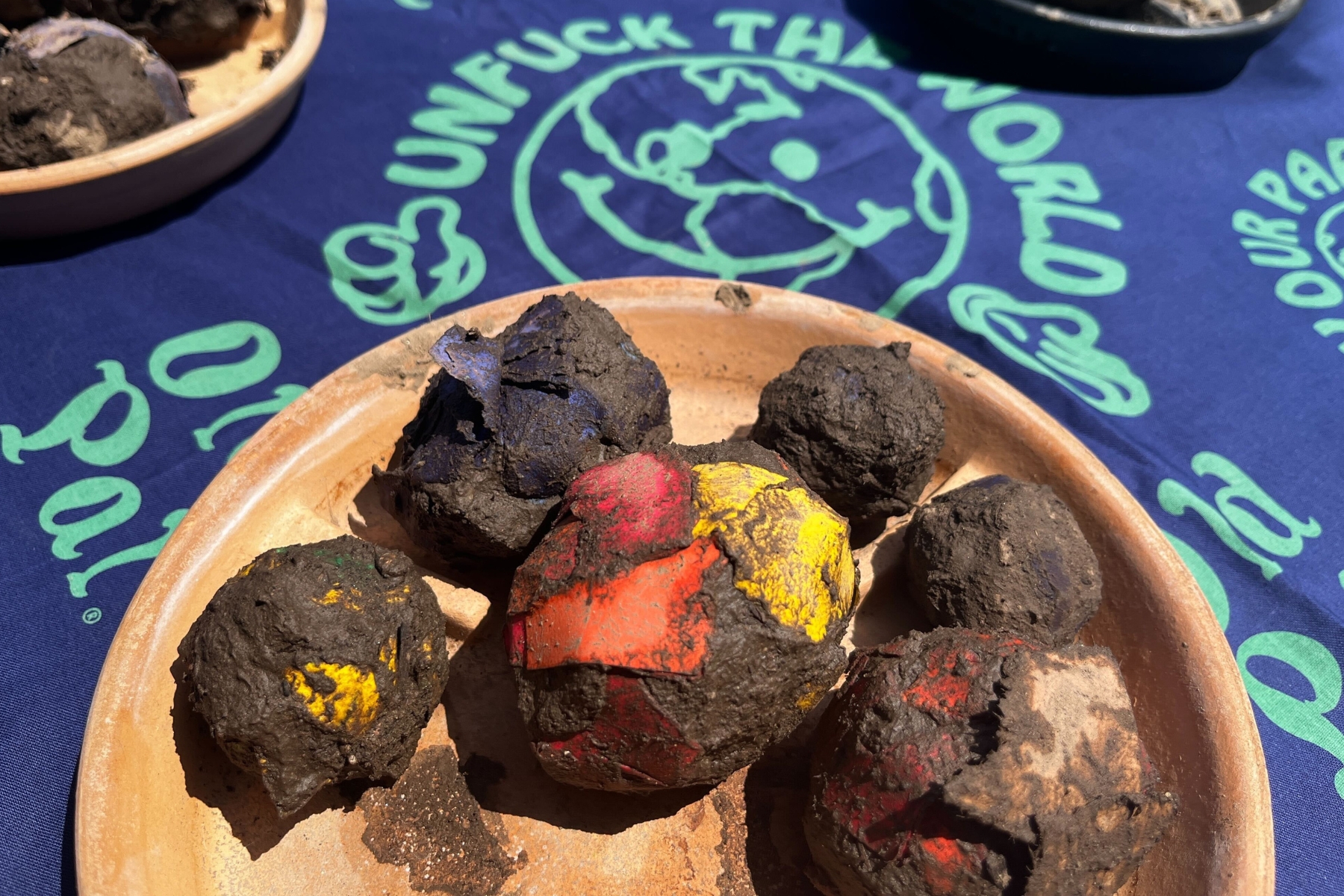Have you ever heard of a seed bomb? It’s like a tiny ball full of soil and seeds that you can chuck anywhere you want stuff to grow. When you toss the seed bomb, it breaks open and the soil and seeds go everywhere. No digging, no fuss – just a quick and easy way to plant seeds and make the world a little greener!
Seed bombs have played a small but important role in transforming New York City by promoting the idea of guerrilla gardening and helping to beautify neglected urban areas. Guerrilla gardening is a movement that encourages people to take action to improve the environment and public spaces through gardening without asking for permission or following traditional rules and regulations.
In cities, seed bombs have been used to plant wildflowers and other native plants in vacant lots, on abandoned land, and in other areas that are in need of greenery. These efforts have helped to increase biodiversity, reduce pollution, and create more attractive and welcoming spaces for residents and visitors.
Seed bombs have also been used as a tool for education and community building. By involving local residents in the process of making and planting seed bombs, people have been able to connect with each other and their environment in new ways, fostering a sense of ownership and pride in their neighborhoods.
While seed bombs alone may not solve all of the environmental issues, they represent a small but meaningful step towards creating a more sustainable and beautiful part of a community.

What’s Inside a Seed Bomb?
Seed bombs consist of three main components: soil, seeds, and a binder. The soil provides a growing medium for the seeds, while the seeds are the plants that will grow once the seed bomb is planted. The binder is a substance that holds the soil and seeds together to form a small ball or shape. The most common binders used are clay, compost, shredded paper, soil, or a mixture of flour and water. The clay and compost help to retain moisture and nutrients for the seeds, while the flour and water mixture provides a quick-drying and sticky substance to hold everything together.
Some seed bombs may also include additional ingredients like fertilizer or beneficial microorganisms to improve the chances of successful germination and growth. Overall, the anatomy of a seed bomb is quite simple but effective in providing a self-contained package for easy planting and growth of plants in a variety of environments.

What Kind of Seeds are Used?
Seed bombs can contain any kind of seed! Wildflower seeds are a popular choice for creating a colorful and diverse garden, while herbs like basil, parsley, and thyme are great for culinary use. Vegetables like lettuce, carrots, and radishes can also be included for a fun and easy-to-grow garden. Additionally, native tree and shrub seeds can be used for reforestation efforts or restoring damaged natural habitats.
When choosing seeds for a seed bomb, it’s important to consider the climate and growing conditions of the intended planting location to ensure the seeds have the best chance of germination and growth. It’s also a good idea to use non-invasive species to avoid causing harm to existing ecosystems.
Seed Bomb Recipes
Seed bombs are easy to make at home, providing a fun way to celebrate Earth Day, spring, or any time you want to practice a meaningful craft. They are excellent gifts and will brighten up just about any patch of dirt. Here are a couple simple recipes to try out.
Shredded Paper Seed Bomb
What you’ll need:
- Shredded paper
- Water
- Flower seeds
- All-purpose flour
- Bowl
Instructions:
- Start by soaking the shredded paper in water for a few hours until it becomes soft and pulpy.
- Drain any excess water and add a handful of flower seeds to the bowl of shredded paper.
- Add a tablespoon of all-purpose flour to the bowl and mix everything together until you get a sticky and moldable consistency. The flour will help the seed bomb hold together.
- Take small handfuls of the mixture and roll them into balls or desired shapes.
- Place the seed bombs on a tray or sheet of wax paper to dry for a few hours or overnight.
- Once the seed bombs are dry, they are ready to be used! Simply toss or plant them in a bare patch of soil, water them regularly, and watch your flowers grow.
This recipe is great for upcycling shredded paper and making use of it instead of throwing it away. You can experiment with different types of flower seeds and even add some fertilizer to help the seeds grow faster.
Clay Seed Bomb
What you’ll need:
- Clay powder
- Compost or potting soil
- Water
- Seeds
- Large bowl
Instructions:
- In a large bowl, mix together 5 parts clay powder and 3 parts compost or potting soil until well combined.
- Slowly add water while kneading the mixture with your hands until it becomes a firm and moldable consistency. Be careful not to add too much water or the mixture will become too wet.
- Add a handful of seeds to the mixture and knead them in, distributing them evenly throughout the clay mixture.
- Take small handfuls of the mixture and roll them into balls or desired shapes. You can also use cookie cutters to make fun shapes, like hearts or flowers.
- Allow the seed bombs to dry completely for at least 24 hours. You can lay them out on a tray or place them in a cool, dry spot.
- Once dry, your seed bombs are ready to be planted! Simply toss or place them on bare soil and watch your plants grow.
This recipe is great for making sturdy and durable seed bombs that can withstand some handling and transportation. You can experiment with different types of seeds and adjust the ratio of clay and soil to fit your needs.

Happy Seed Bombing
Seed bombs are a cool way to plant seeds without digging up the dirt. Kickstart your garden or transform abandoned lots into wildflower havens and create more welcoming public spaces. Plus, making seed bombs is a fun way to get people involved in their communities and the environment. Making and throwing seed bombs can bring people together and foster a sense of pride and ownership in their neighborhoods. Have fun making your own seed bombs and adding a touch of green to your surroundings.







